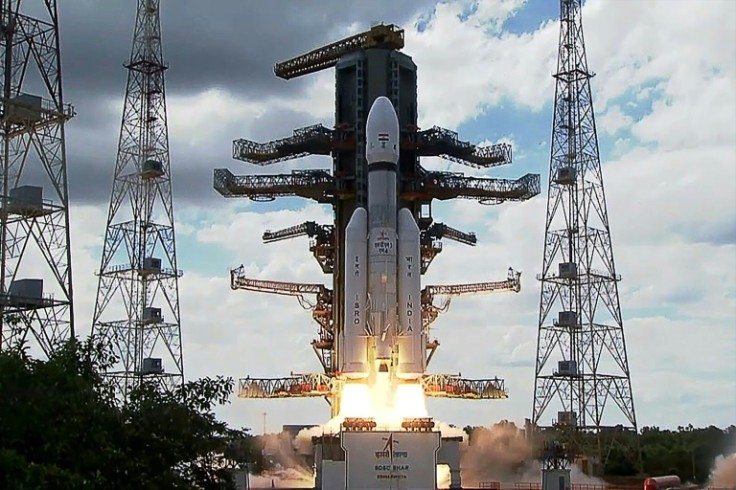Chandrayaan-3: Indian Space Agency Shares New Video Of Rover Rolling Onto Moon's Surface

KEY POINTS
- The video shows the Pragyan rover rolling down from the Vikram lander to the lunar surface
- The microwave oven-sized rover is designed to travel up to 1,640 feet
- Pragyan is the first of its kind rover to be deployed in the south pole of the moon
The Indian Space Research Organization (ISRO) has successfully deployed the Pragyan rover on the lunar surface, allowing India to take "a walk on the moon" after the successful landing of the Chandrayaan-3 mission.
"The Ch-3 Rover ramped down from the Lander and India took a walk on the moon!" ISRO wrote on X.
The Pragyan rover, weighing about 57 lbs (26kg), traveled to the moon in the belly of the Vikram lander following the July 14 liftoff of the Chandrayaan-3 mission.
The spacecraft touched down Wednesday, making India the first country to achieve a soft landing on the little-explored south pole of the moon and the fourth nation after the U.S., the former Soviet Union and China to land anywhere on the moon.
Here is how the Lander Imager Camera captured the moon's image just prior to touchdown. pic.twitter.com/PseUAxAB6G
— ISRO (@isro) August 24, 2023
The space agency on Friday shared a video of the rover rolling onto the moon's surface. Panels on one side of the Vikram lander opened to deploy a ramp, which was used by the microwave oven-sized rover to roll down and take its first steps on the surface of the moon.
... ... and here is how the Chandrayaan-3 Rover ramped down from the Lander to the Lunar surface. pic.twitter.com/nEU8s1At0W
— ISRO (@isro) August 25, 2023
The Pragyan — equipped with a camera, a spectrometer, a magnetometer and other instruments — is the first of its kind to be deployed on the south pole of the moon and is expected to operate for one lunar day, which is about 14 Earth days.
It is designed to travel up to 1,640 feet at a speed of one centimeter per second. Pragyan will make its way around the rocks and craters on the lunar surface to collect crucial data and images that will then be sent to Earth for studies.
The wheels of the rover have India's national emblem and ISRO's logo embossed, which will allow Pragyan to leave imprints and mark India's presence on the moon.
With the help of two scientific instruments carried by the rover, ISRO hopes the data collected will help study the minerals on the lunar surface and analyze the chemical composition of the soil.
The Chandrayaan-3 mission also aims to find evidence of water on the lunar surface, which can help further exploration of celestial bodies beyond the moon.
© Copyright IBTimes 2024. All rights reserved.






















